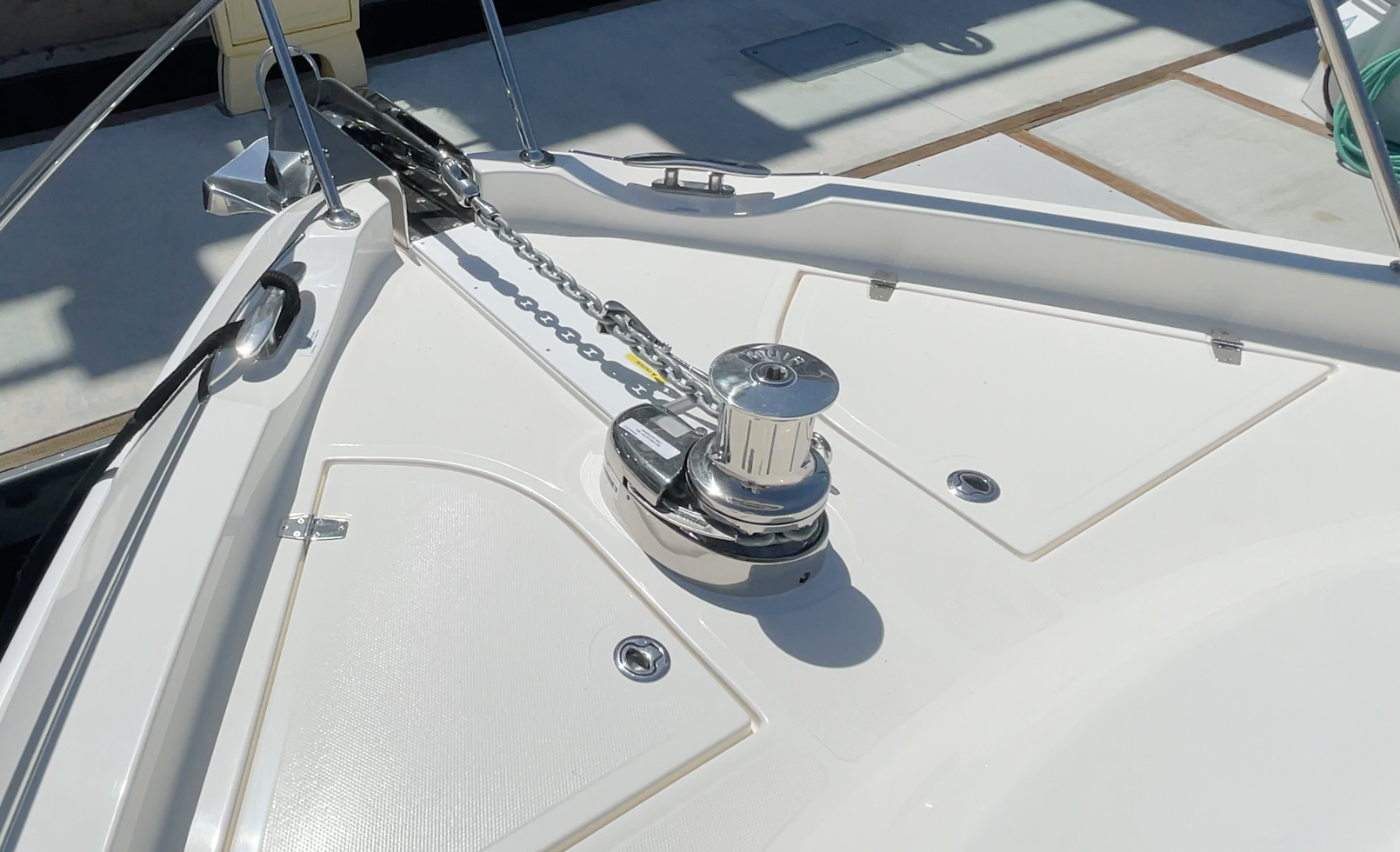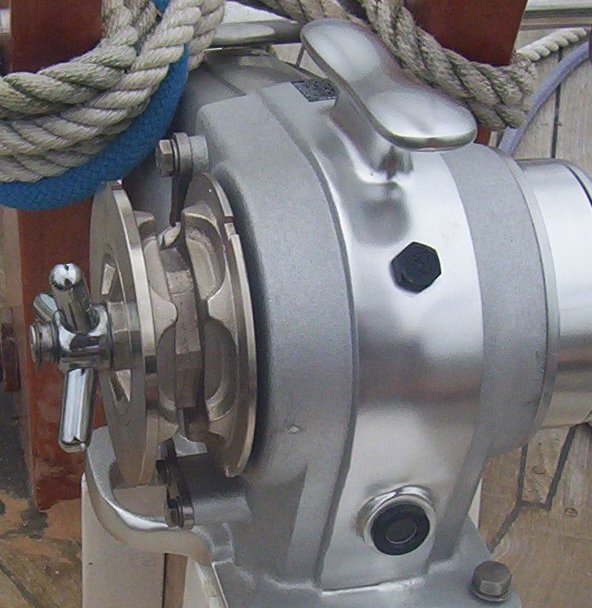Windlass Maintenance: Don’t Overlook It

A windlass can be a real back-saver, but it needs regular maintenance.
When it comes to anchoring, nothing promotes a good night’s sleep like using the appropriate ground tackle — except maybe the knowledge that there’s a reliable anchor windlass at the ready to save your back by hauling it all onboard in the morning. Anchor windlasses perform under the harshest conditions with little complaint. However, even these silent deck hands require regular maintenance to ensure proper operation.
Here are a few tips on how to keep your windlass ready, willing and able.
Making The Right Choice
Anchor windlasses come in a variety of styles — vertical or horizontal (in reference to drum orientation) and power sources, manual, electric or hydraulic. Each has its own set of pros and cons with regard to maintenance and upkeep. While almost bulletproof, manual units require conscientious greasing and cleaning. Hydraulic windlasses can develop fluid leaks, while electrical versions have many components (batteries, switches, solenoids, etc) that require vigilant maintenance due to being located in exposed, often wet locations.
The Basics
While the maintenance guidelines provided by the manufacturer of a particular model should always be followed, here are some good basic tips that can help extend the life of any windlass.
- Rinse the windlass thoroughly with fresh water after each outing to wash off salt, sand and mud. Rinsing the rode (particularly chain) before it enters the anchor locker is also a good idea, particularly if winch components are located within the locker and can be spattered with muck and debris.
- Check the gear case lube oil level weekly. Most worm gear-driven windlasses will have a sight glass for this. Milky oil indicates the presence of water (typically from a failed seal) and should be corrected immediately.
- Check windlass mounting hardware regularly for looseness, movement, corrosion, and leaks. Leaks are often caused by a broken bedding seal, a common result of the windlass being overstressed.
- Inspect all electrical connections monthly for problems such as corrosion, arcing or charring. Disassemble and clean corroded connections (after turning off all power) with a wire brush and electrical cleaner — vinegar works well in a pinch. Terminal and post connections should be clean and tight. Coating battery posts with di-electric grease and installing insulating rubber boots will protect them from corrosion and accidental shorting.
- For units with the motor and gearbox located below decks, check the casing regularly for corrosion. Many are constructed of painted steel and will readily corrode in the damp environment of the anchor locker should the finish be damaged. Address corrosion immediately (clean, prime, and repaint) to prevent the situation from worsening.
- Inspect foredeck footswitches for damage and proper operation. Ensure the hinged covers are in place (to prevent accidental operation) and that the covers themselves operate easily and have a good seal when closed. Check the rubber diaphragms for cracks, tears, or deterioration — spraying them regularly with a UV shield (such as 303 Aerospace Protectant) will noticeably extend their service life.
Tips To Make a Windlass Last
- Motor forward when raising the anchor to reduce the strain on the windlass — never use the windlass to pull your boat to the anchor.
- A windlass isn’t designed to weigh an anchor and rode under strain. If the anchor has to be broken out, belay the rode and use the engine to break it free.
- Never allow the full weight of your boat to ride on the windlass while at anchor. Always remove the strain from the windlass by cleating off rope rodes or using a snubber or bridle for an all-chain rode.
- Always run the boat engine while raising or lowering the anchor. This minimizes drain on the batteries (when using an electric windlass) and maintains control of the vessel when the anchor breaks free.
- Keep the windlass covered when not in use to protect it from salt, the heat of the sun and corrosion.
- Use the windlass regularly to keep all internal gears lubricated. Grease and lube oil tend to settle at the bottom of the gearbox, resulting in dry section of gears that could be prone to rust. If at the dock or hauled, crank the windlass over a few turns every couple of weeks.
By Capt. Frank Lanier
Captain Frank Lanier is a SAMS® Accredited Marine Surveyor with over 40 years of experience in the marine and diving industry. He’s also an author, public speaker, and multiple award-winning journalist whose articles on seamanship, marine electronics, vessel maintenance and consumer reports appear regularly in numerous marine publications worldwide. He can be reached via his website at www.captfklanier.com.
